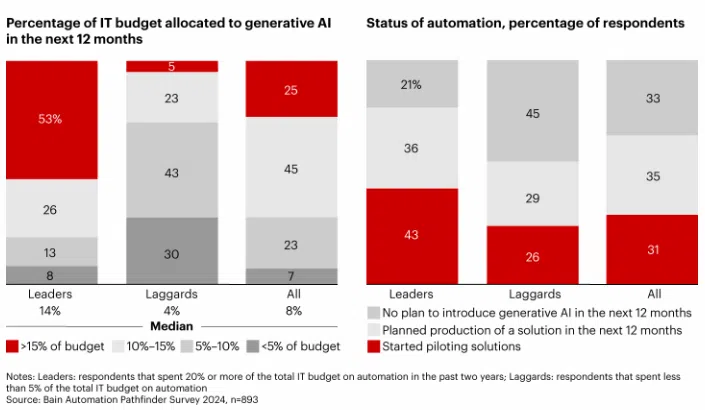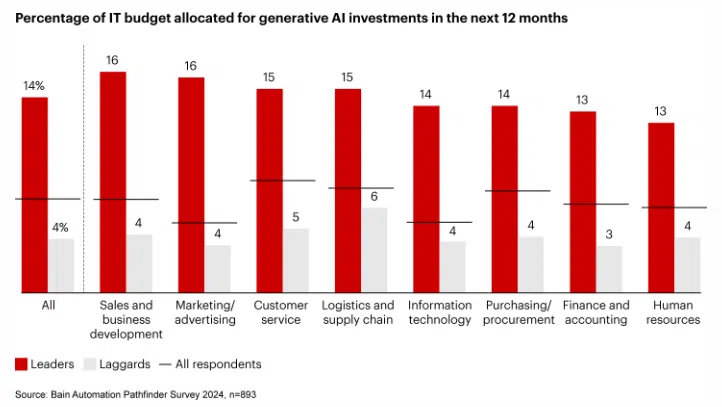Mastering IT Infrastructure Management: Key Strategies for Business Success

What is IT Infrastructure Management?
IT infrastructure management involves overseeing and managing essential IT components such as hardware, software, network infrastructure, and data. It ensures that these systems are efficiently operating to meet the organization’s needs while staying aligned with business goals. This includes IT infrastructure planning, IT infrastructure design, and IT infrastructure implementation.
The core areas of IT infrastructure management include:
- Network Management: Ensuring smooth communication between devices and networks.
- Storage Management: Managing data storage systems and backups.
- Security Management: Protecting IT systems from cyber threats.
- Hardware and Software Management: Keeping systems up to date and operational.
Effective IT infrastructure management can help businesses reduce costs, improve productivity, and enhance operational efficiency.
Key Strategies for Mastering IT Infrastructure Management
Effective IT infrastructure management is the backbone of modern business operations, ensuring that systems run smoothly, securely, and efficiently. As technology evolves and businesses scale, the need for a robust infrastructure becomes even more critical. To stay competitive and maintain operational excellence, companies must adopt key strategies that not only enhance the performance of their IT systems but also align with business goals. This section will explore essential strategies for mastering IT infrastructure management and how they can drive long-term success.
1. Invest in Scalable Infrastructure
Scalability is essential for growing businesses. As companies expand, so do their IT requirements. Ensuring that your IT infrastructure can scale with the growth of your business is crucial for long-term success. Scalable infrastructure allows for the addition of new systems, users, and applications without causing significant downtime or requiring complete overhauls.
Cloud computing business has emerged as one of the leading solutions for businesses looking for scalability. According to a report from MarketsandMarkets, the global cloud computing market is expected to grow from $626.4 billion in 2023 to $1,266.4 billion by 2028 at a CAGR of 15.1%.

Source: Markets and Markets
2. Focus on Automation
Automation is a game-changer for businesses looking to streamline their IT infrastructure management. By automating routine tasks such as software updates, IT infrastructure monitoring, and backups, businesses can reduce the risk of human error and free up valuable IT resources for more strategic tasks.
For instance, automating network performance monitoring can help organizations detect and resolve issues before they cause downtime, improving overall system reliability. A study by Forrester Research found that 63% of companies implementing automation reported improved efficiency and reduced operational costs. And to adapt this need of businesses, according to Bain & Company, automation leaders are set to invest nearly four times more in generative AI compared to laggards, and many are already fast-tracking its implementation.

Source: Bain & Company
This significant investment spans across key functions, whether in early adopters like customer service, IT, and marketing, or in later-adopting areas such as finance and HR.

Source: Bain & Company
3. Prioritize Security and Risk Management
With the increasing number of cyber threats, robust security protocols are an essential component of IT infrastructure management. Businesses must invest in both proactive and reactive security measures to safeguard their systems and data. This includes implementing firewalls, antivirus software, encryption, and intrusion detection systems.
According to IBM’s “Cost of a Data Breach Report,” the average cost of a data breach was $4.24 million in 2021, underscoring the importance of prioritizing IT security .
In addition, businesses should conduct regular security audits and vulnerability assessments to identify and address potential threats before they cause damage. Risk management strategies such as disaster recovery planning and business continuity planning can also help mitigate the impact of IT failures or cyberattacks.
4. Leverage Cloud-Based Solutions
The cloud is rapidly transforming how businesses manage their IT infrastructure. By moving to cloud-based solutions, businesses can reduce the need for on-premises hardware, improve scalability, and enhance security. Cloud infrastructure also offers flexible pricing models, allowing businesses to pay for only the resources they use, making it a cost-effective option.
A Gartner report estimates that by 2025, 85% of businesses will have adopted a cloud-first principle, further highlighting the growing importance of cloud-based infrastructure. Cloud-based solutions can also improve collaboration and remote work capabilities, making them indispensable in today’s business landscape.
5. Regularly Update and Patch Systems
Keeping systems up to date is critical for maintaining a secure and efficient IT infrastructure. Unpatched systems are vulnerable to cyberattacks, and outdated hardware or software can lead to performance issues. Businesses should develop a robust patch management process to ensure that all systems are regularly updated with the latest security patches and software versions.
According to a report from the Ponemon Institute, 57% of businesses reported that poor patch management contributed to successful cyberattacks. Automating the patch management process can help businesses stay on top of updates and minimize the risk of vulnerabilities.
Looking For a Trusted Tech Partner?
We’ll help you decide on next steps, explain how the development process is organized, and provide you with a free software project estimation.
6. Implement Monitoring and Analytics
Real-time monitoring and analytics provide businesses with valuable insights into the performance of their IT infrastructure. By monitoring key metrics such as network traffic, server infrastructure performance, and application response times, businesses can proactively address issues and optimize IT infrastructure.
Many organizations are adopting AI-powered monitoring tools to gain deeper insights into their IT systems. According to a report by Cisco, businesses that use AI-powered monitoring tools experience a 35% reduction in downtime.
Analytics can also help businesses make data-driven decisions when it comes to IT infrastructure capacity planning, resource allocation, and system optimization. This leads to improved efficiency, reduced costs, and better overall system performance.
7. Centralize IT Management
For businesses with multiple locations or remote workers, centralized IT infrastructure management is essential. Centralization allows businesses to manage all of their IT systems from a single platform, simplifying the management process and improving oversight.
Centralized management platforms provide a unified view of all IT resources, enabling businesses to monitor performance, detect issues, and apply updates or patches across the entire organization. This helps ensure consistency and reduces the risk of security vulnerabilities or system failures.
8. Develop a Disaster Recovery Plan
Disasters, whether natural or human-made, can cause significant disruptions to business operations. A well-designed disaster recovery plan (DRP) is crucial for ensuring business continuity in the event of an IT failure or security breach. DRPs outline the steps necessary to restore systems and data after an outage and minimize downtime.
According to research by FEMA and SBA, 40% of businesses fail to reopen after a disaster, and another 25% close within one year. A solid disaster recovery plan can help businesses avoid such outcomes by ensuring that critical systems are restored quickly.

Source: FEMA & SBA
9. Align IT Infrastructure with Business Goals
One of the most important strategies for mastering IT infrastructure management is aligning your IT systems with your overall business objectives. Businesses should regularly review their IT infrastructure to ensure it meets current needs and supports long-term goals.
For example, if your business is planning to expand, your IT infrastructure should be able to handle increased traffic, data, and workloads. IT managers should work closely with business leaders to identify key areas for improvement and ensure that the infrastructure is scalable, secure, and reliable.
10. Train and Educate IT Staff
Finally, investing in the training and education of your IT staff is crucial for successful IT infrastructure management. As technology continues to evolve, IT professionals must stay up to date with the latest IT infrastructure trends, tools, and IT infrastructure best practices.
By providing ongoing training, businesses can ensure that their IT teams have the skills and knowledge needed to manage infrastructure effectively. This reduces the likelihood of errors, improves system reliability, and enhances the overall efficiency of IT infrastructure services.
Conclusion
In conclusion, IT infrastructure management plays a critical role in ensuring business success. By adopting key strategies such as investing in scalable infrastructure, focusing on automation, prioritizing security, and leveraging cloud-based solutions, businesses can optimize their IT systems for improved performance, deduction management, and long-term growth.
With the increasing complexity of IT environments, businesses must prioritize effective IT infrastructure management to stay competitive in today’s fast-paced digital landscape. By mastering these strategies, companies can create a solid foundation for success, ensuring that their IT infrastructure supports their business objectives and drives innovation.
At Savvycom, we understand that effective IT infrastructure management is crucial for achieving business success in today’s digital landscape. As a leading software development company in Vietnam, we specialize in providing tailored IT solutions that meet the unique needs of your organization. Our team of experienced professionals is dedicated to helping you optimize your IT systems, implement automation strategies, and enhance security protocols. By partnering with us, you gain access to innovative technologies and best practices that can transform your IT infrastructure into a competitive advantage. Let Savvycom be your trusted ally in navigating the complexities of IT infrastructure management, so you can focus on driving growth and achieving your business goals.
Tech Consulting, End-to-End Product Development, Cloud & DevOps Service! Since 2009, Savvycom has been harnessing digital technologies for the benefit of businesses, mid and large enterprises, and startups across the variety of industries. We can help you to build high-quality software solutions and products as well as deliver a wide range of related professional services.
Savvycom is right where you need. Contact us now for further consultation:
- Phone: +84 24 3202 9222
- Hotline: +1 408 663 8600 (US); +612 8006 1349 (AUS); +84 32 675 2886 (VN)
- Email: [email protected]


